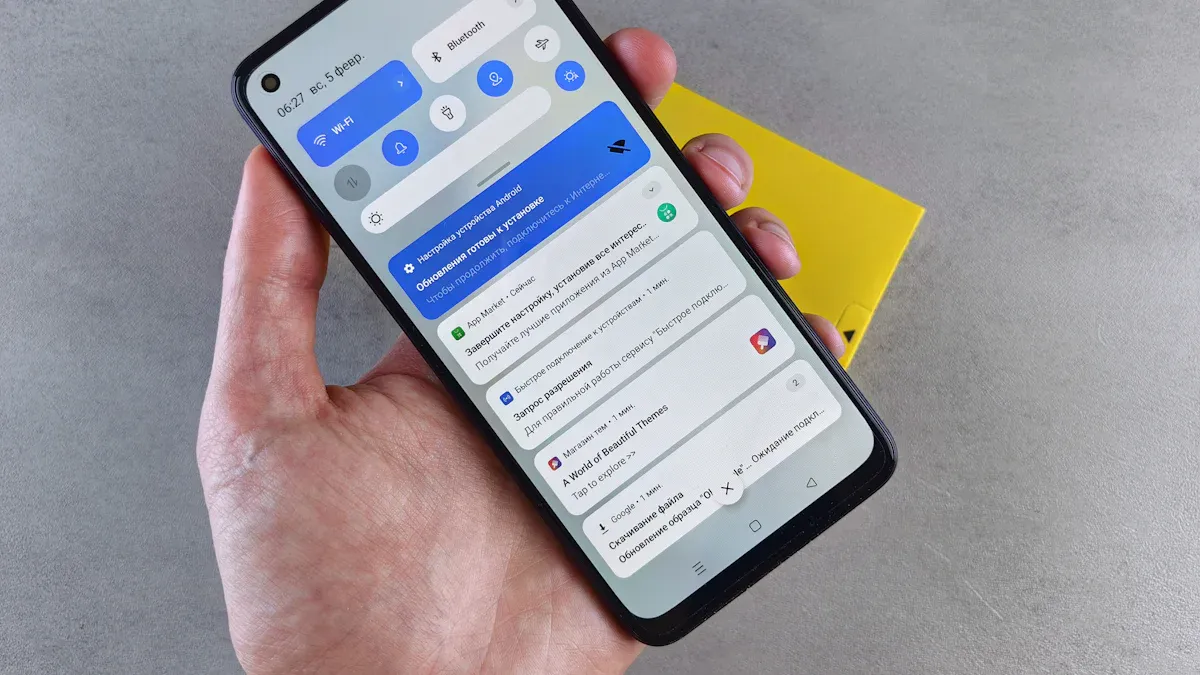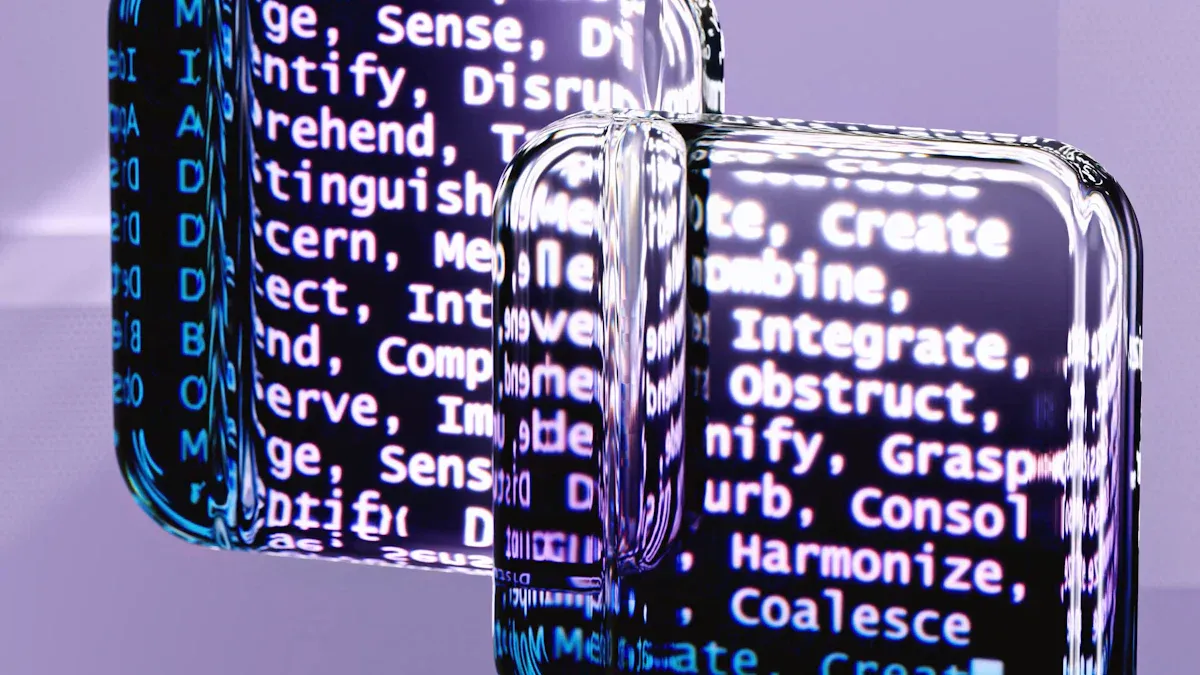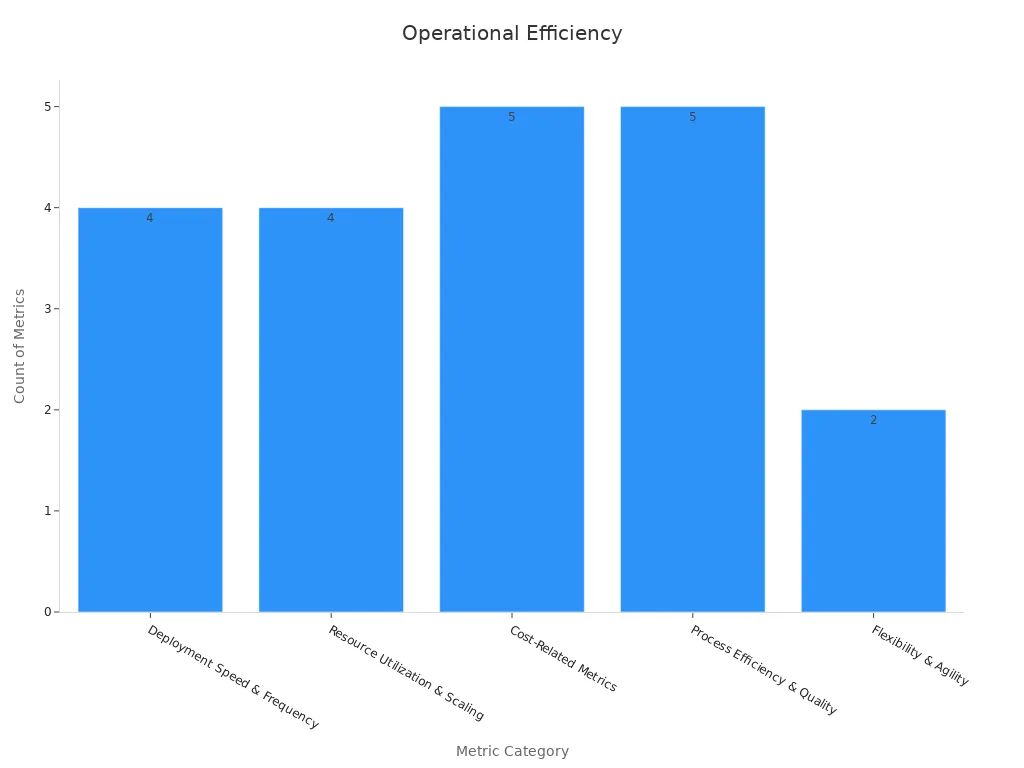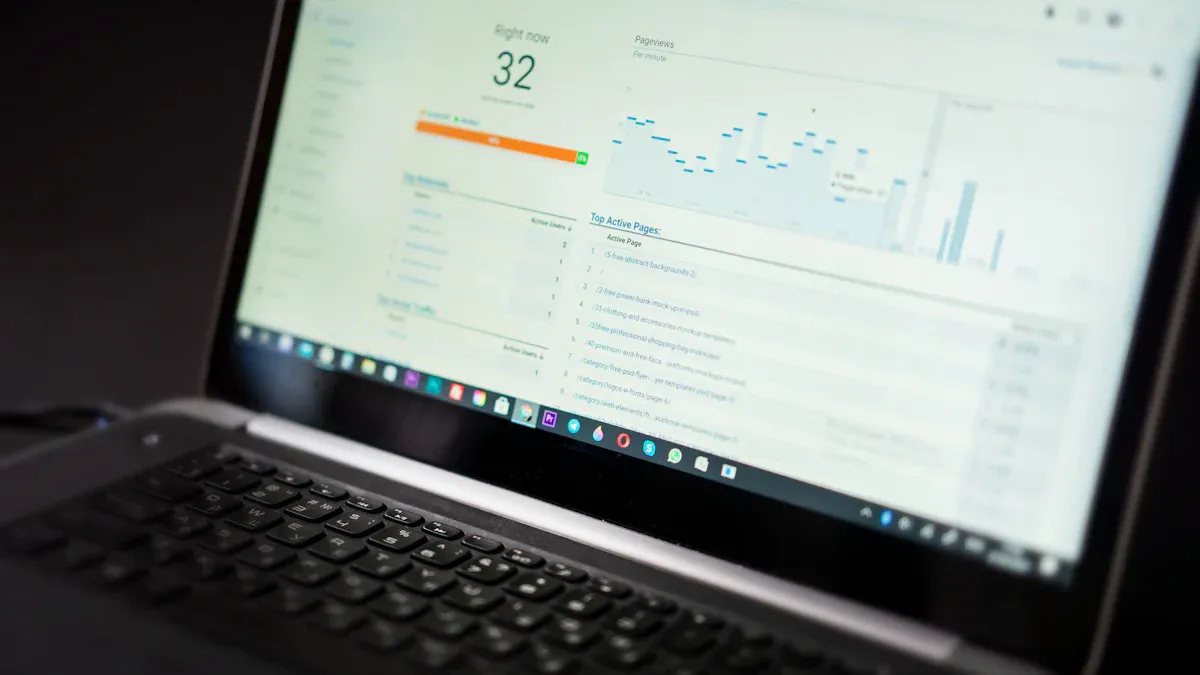Monitoring Brand Mentions with AI and Acting Quickly

You need to know what people say about your brand as soon as they say it. Monitoring Brand Mentions in real time helps you spot both praise and problems before they grow. AI tools give you the power to react faster and make better decisions. These smart systems help you protect your reputation and find new chances to shine.
Key Takeaways
Watching brand mentions as they happen helps you keep your reputation safe and lets you reply fast to good or bad comments.
AI tools send quick alerts, check how customers feel, and find patterns to help you make better choices.
Using AI to watch mentions makes customers happier, lets you answer faster, and helps stop big problems before they start.
Set up your monitoring with clear keywords, simple tools, and add alerts to your daily routine for the best results.
Respond quickly with honest and steady answers, and have a plan to handle risks and problems to keep your brand strong.
Monitoring Brand Mentions

Why It Matters
Today, news and opinions travel very fast. People talk about brands on social media, review sites, and forums all the time. Monitoring Brand Mentions helps you know what people say about your brand right away. This helps you protect your reputation and build trust with your audience.
When you track brand mentions, you can find both praise and problems early. For example, 43% of consumer complaints happen in public forums. If you do not see these complaints quickly, your brand could get hurt. In fact, 82% of customers have stopped buying from companies after bad service, often because their complaints were ignored. Monitoring Brand Mentions lets you respond before problems get bigger.
Many companies use AI tools to watch for brand mentions. These tools help you find mentions on social media, news sites, and blogs. They also help you understand the mood behind each mention. Studies show that 88% of marketers use AI every day, and almost half say AI is important for their social media strategy. AI-powered tools can even spot emotions in messages, so you can reply in a more personal way.
Tip: When you monitor brand mentions, you can make your service better. Good service leads to more customer engagement, loyalty, and satisfaction.
Risks and Benefits
If you ignore brand mentions, your brand could be at risk. If you miss a negative comment or a crisis, your reputation can get worse. Only 22% of PR leaders say their teams know what affects brand reputation. This means many brands do not see problems until it is too late.
But Monitoring Brand Mentions has many benefits. You can act fast when something goes wrong. For example, a top e-commerce retailer saw a 65% drop in response time and a 25% rise in customer satisfaction after using AI monitoring. Another company, BuildBetter, found a crisis three days earlier than before. These quick actions help you stop bigger problems.
Here is a table showing how real companies improved by Monitoring Brand Mentions:
Company / Case Study | Benefit(s) | Impact |
|---|---|---|
Metia | 25% more customer satisfaction, 15% more loyalty | Better experience and loyalty through AI-powered sentiment analysis |
BuildBetter | Crisis detected 3 days earlier | Early warning helped prevent a crisis |
E-commerce retailer | 65% faster response, 25% more satisfaction | Quick complaint handling, fewer negative reviews |
Food and beverage company | 40% better sentiment recovery after recall | Faster brand recovery after a crisis |
Major airline | 30% fewer crisis posts, 20% more positive posts | Effective crisis management and improved brand perception |
Forrester | 25% more customer retention, 15% more revenue | Strong financial and retention gains from AI sentiment analysis |
You also get a better view of your brand’s health. Tools like Google Analytics 4 and Brandwatch track mentions on many channels. They show you how people feel about your brand and help you spot trends. These insights help you make smarter choices.
Note: Monitoring Brand Mentions helps you see both the risks and the rewards. You can protect your brand and find new ways to connect with your audience.
AI Advantages
Real-Time Insights
AI lets you see what people say about your brand right away. You do not need to wait for reports or search through lots of posts. AI gives you alerts and updates as soon as something happens. This helps you find problems or praise fast.
A table below shows how real-time AI monitoring helps businesses do better:
Performance Metric | Before AI Monitoring | After AI Monitoring | Improvement Description |
|---|---|---|---|
Defect Detection Rate | 85% | 98% | Higher accuracy in finding issues, which means better quality control. |
Unplanned Downtime (hours/year) | 120 | 40 | Less downtime, so your business runs smoother. |
Equipment Lifespan (years) | 8 | 12 | Machines last longer because AI predicts problems early. |
Production Efficiency | N/A | 20-30% increase | More products made in less time, thanks to real-time monitoring. |
Maintenance Costs | High | Low | Lower costs because you fix things before they break. |
Safety Incident Reduction | N/A | 40-60% decrease | Fewer accidents because AI spots dangers early. |
Tip: Real-time insights help you act before small issues become big problems. You can protect your brand and keep your customers happy.
A study by McKinsey found companies using AI-driven analytics get more new customers. They are also more likely to make a profit. Most businesses that use AI see their money grow. This proves real-time insights are important for Monitoring Brand Mentions.
Sentiment Analysis
AI does more than just find mentions. It also figures out how people feel about your brand. Sentiment analysis uses smart programs to read the mood in each post, review, or comment. You can see if people feel happy, mad, or just okay about your brand.
Hybrid AI systems can reach up to 91% accuracy in understanding customer feelings.
Domain-specific models improve accuracy by 37% over general models.
Sentiment analysis can predict if people will use new features with 74% accuracy.
83% of companies using sentiment analysis see better customer satisfaction in one year.
Real-time dashboards can cut negative user sentiment by 34% in six months.
Companies report an average ROI of 287% over three years from using sentiment analysis.
Sentiment-driven changes can speed up product launches by 37% and boost user adoption by 28%.
Interfaces built with sentiment insights show 42% more engagement and 31% fewer users leaving.
Case studies show real results. Microsoft’s Xbox team made users happier by 24% after using sentiment analysis to help with updates. Adobe got 40% more good feedback after changing products using sentiment data. Spotify made people happier with playlists by 26% and helped them find music by 31%. Slack kept more users trying their service and got 13% more paid users with sentiment-driven onboarding.
Note: Sentiment analysis helps you know your audience better. You can make smarter choices and help your brand look better.
Trend Detection
AI can find patterns and trends in lots of data. You can see what topics are getting popular, what customers want, and what your competitors are doing. This helps you stay ahead.
The market for sentiment analysis tools is growing fast, from $2.6 billion in 2020 to $14.1 billion by 2025.
87% of businesses say sentiment analysis is key for brand reputation.
Brandwatch found that AI tools can boost customer retention by 25% and sales by 15%.
Metia saw a 300% increase in marketing ROI with real-time sentiment tracking.
62% of companies use AI-powered sentiment tools, and 21% plan to start soon.
75% of companies see positive ROI from sentiment analysis, with up to 15% more revenue and 10% lower costs.
AI trend detection uses data from social media, reviews, sales, and even competitors. For example, fashion brands use AI to guess new styles by looking at millions of posts and sales numbers. This helps them launch the right products at the right time.
Tip: Use AI dashboards to watch for new trends. You can change your plans fast and meet customer needs sooner.
Here is a chart that shows how different operational metrics get better with AI monitoring:

AI also helps you see how well you are doing. You can track things like how fast you work, how you use resources, costs, process quality, and how flexible you are. The table below shows some important metrics you can watch:
Metric Category | Specific Metrics | Explanation |
|---|---|---|
Deployment Speed & Frequency | Deployment Frequency, Lead Time for Changes, Change Failure Rate, Mean Time to Recovery (MTTR) | Shows how fast you can make changes and fix problems. |
Resource Utilization & Scaling | CPU and Memory Use, Auto-Scaling Events, Idle Time per Resource, Container/VM Density | Helps you use resources wisely and avoid waste. |
Cost-Related Metrics | Total Cloud Spend, Cost per Service/Application, Cost per Deployment, Savings from Automation, AI ROI | Lets you see if AI is saving you money. |
Process Efficiency & Quality | Process Execution Time, Operational Costs per Unit, Labor Productivity, Error Reduction, Delivery Punctuality | Measures how well your processes work and how happy your customers are. |
Flexibility & Agility | Response Times to Changes, Ability to Scale Production | Shows how quickly you can adapt to new situations. |
Note: Monitoring Brand Mentions with AI helps you spot trends, measure your progress, and make better decisions for your brand.
Key Features
Alerts
You must know about important mentions right away. AI-powered alerts send you instant notifications when your brand is online. Tools like Meltwater and Brand24 give real-time alerts for social media, news, and blogs. These alerts help you act fast if someone complains or gives good feedback. Meltwater’s social listening suite tells you quickly when topics about your brand appear. This lets you respond before problems get bigger or chances are missed. Many platforms use AI to check the tone of each mention, so you know if it is positive, negative, or neutral.
Tip: Real-time alerts help you keep your brand safe and build better relationships with your audience.
Dashboards
Dashboards show all your brand mentions in one place. You can track trends, see engagement, and learn how people feel about your brand. Tools like Mentionlytics, Talkwalker, and BrandMentions have dashboards that show data from many channels. These dashboards use charts and graphs to make things easy to see. The University of Montana saved hours by using dashboards, so their team could do deeper analysis. The Community College System of New Hampshire used live dashboards to make faster and smarter choices. A Harvard Business Review study found that seeing data in pictures can make decisions up to seven times faster. Dashboards help you find problems and wins quickly.
Dashboards save time because they update data by themselves.
Visual displays help you spot trends quickly.
Teams can decide faster and feel more sure about their choices.
Integration
Integration links your monitoring tool with other systems you use. You can connect tools like Determ or Critical Mention with email, Slack, or CRM platforms. This makes sharing insights and taking action easy without switching apps. Good integration means your team works better and does not miss important updates. In healthcare, smooth integration helps AI tools fit into daily work, lowers mistakes, and boosts efficiency. Epic’s AI validation software shows that good integration builds trust and accuracy. When your tools work together, you get better results and less stress.
Setup
Tool Selection
First, pick an AI monitoring tool that fits your needs. Choose one with real-time alerts and simple dashboards. Make sure it connects well with other tools you use. The tool should cover all places people talk about your brand. Check if it gives correct data and easy-to-read reports. Many companies use both people and computers to test tools. Experts and users can tell you if a tool makes people happier. Automated testing tools like Galileo watch how the tool works and warn you about changes. Try the tool with your own data before you buy it to see if it works well.
Tip: Pick tools that let you track things like sentiment and topic trends. Make sure the tool can grow with your business and fits your budget.
Keyword Setup
Set up keywords for your brand, products, and common misspellings. Add your company name, product names, and words from your industry. Include competitor names to see more. Use survey scores to find out which keywords are most important. Look at your data often to find new trends and change your list. This helps you catch new topics and keep your alerts useful. Good keywords make your alerts better and cut down on extra noise.
Check and change your keyword list every month.
Use trend checks to find new words people use.
Split keywords by product, campaign, or region for better results.
Workflow Integration
Connect your monitoring tool to your daily work. Link it to email, Slack, or your CRM so you always get alerts. This helps you answer faster and work better as a team. Companies that use AI monitoring this way see big improvements. For example, process speed can get up to 15 times faster. Customer happiness can go up by 30-50%. You also save time and money. The table below shows some real results from using workflow integration:
Operational Metric | Improvement / Result |
|---|---|
Inspection processing speed | |
Process cycle time reduction | 40-70% decrease |
Maintenance cost reduction | 34% decrease |
Customer satisfaction improvement | 30-50% increase |
Project setup time reduction | From 5 days to 4 hours |
Keep making your setup better. Set clear goals and KPIs. Ask your team for feedback often. Check how your system is working with audits. Update your setup when your needs change. This keeps your monitoring strong and your brand safe.
Quick Action

Response Strategies
You need to act fast when someone mentions your brand online. Quick responses can turn a problem into a win. Many brands have seen big results by acting quickly. Here is a table showing how some brands used fast action to boost their results:
Brand | Quick Action Taken | Quantitative Outcome(s) |
|---|---|---|
Barbie | Responded to trending content by involving celebrities | 744% more tweet engagement; 149 million Instagram Reels views |
Starface | Reposted funny TikTok videos from users | More engagement and social proof |
Hunter | Found unlinked mentions and reached out for backlinks | Over 200 high-quality backlinks |
Customers.ai | Used real-time monitoring at a summit to find influencers and focus channels | 42% more brand mentions; 728% more engagement; 38% more reach |
Nike | Acted on feedback and trends, like hands-free shoes and resell issues | Better reputation and customer engagement |
To build a strong response plan, follow these steps:
Set clear company values that match what your customers care about. Almost 90% of shoppers stay loyal to brands with shared values.
Prepare a plan for negative feedback. Check if the criticism is real and if you can fix it.
Take responsibility when needed. Offer solutions and follow up to rebuild trust.
Watch your reputation on all channels, like Google, social media, and reviews.
Keep your voice and message the same everywhere.
Respond quickly. 80% of people care about how recent reviews are, and fast replies can stop damage.
Get outside help if a problem is too big to handle alone.
Tip: Fast, honest replies show you care about your customers and your brand.
Crisis Management
You can face a crisis at any time. Good crisis management helps you protect your brand and recover faster. Start by spotting risks early. Look for things that could hurt your reputation. Next, decide which risks matter most. Give each risk to someone on your team so they know what to do.
Here are steps you can use for crisis management:
Rank risks by how much they could hurt your brand.
Assign each risk to a team member for accountability.
Use different strategies:
Avoid risks by changing your plans.
Accept or share risks with others.
Reduce risks with clear action steps.
Transfer risks to another party if needed.
Keep checking on risks and update your plans as things change.
Use tools to track and learn from each crisis.
Note: Good crisis management means you learn from each event and get better at protecting your brand.
AI gives you the power to manage your brand’s reputation before problems grow. You can spot trends, measure customer feelings, and act fast to protect your brand. Companies using AI-powered sentiment analysis see up to a 25% rise in customer satisfaction and a 15% boost in brand reputation.

To get the most from AI monitoring, you can:
Set clear goals for your brand insights.
Choose tools that fit your needs and workflows.
Long-term studies show that AI helps you keep loyal customers and grow your brand’s value. As AI tools evolve, you gain new ways to track, predict, and improve your brand’s future.
FAQ
How often should you check your brand mentions?
You should check your brand mentions every day. Real-time alerts help you see new mentions right away. This keeps you ready to respond quickly and protect your brand.
Can AI tools find negative comments before they go viral?
Yes! AI tools scan social media and news for negative comments. You get alerts as soon as something happens. This helps you act before problems grow.
What channels do AI monitoring tools cover?
Most AI tools watch social media, news sites, blogs, and forums. Some tools also track podcasts, videos, and images. You can choose which channels matter most for your brand.
Do you need technical skills to use AI monitoring tools?
No, you do not need special skills. Most tools have easy dashboards and simple setup steps. You can start tracking your brand in minutes.
Tip: Many tools offer tutorials and support if you need help.
See Also
Comparing Writesonic AI And QuickCreator For Content Creation
Top SEO Trends And Predictions To Watch In 2024
How To Boost Audience Engagement Using TikTok Analytics Tools

